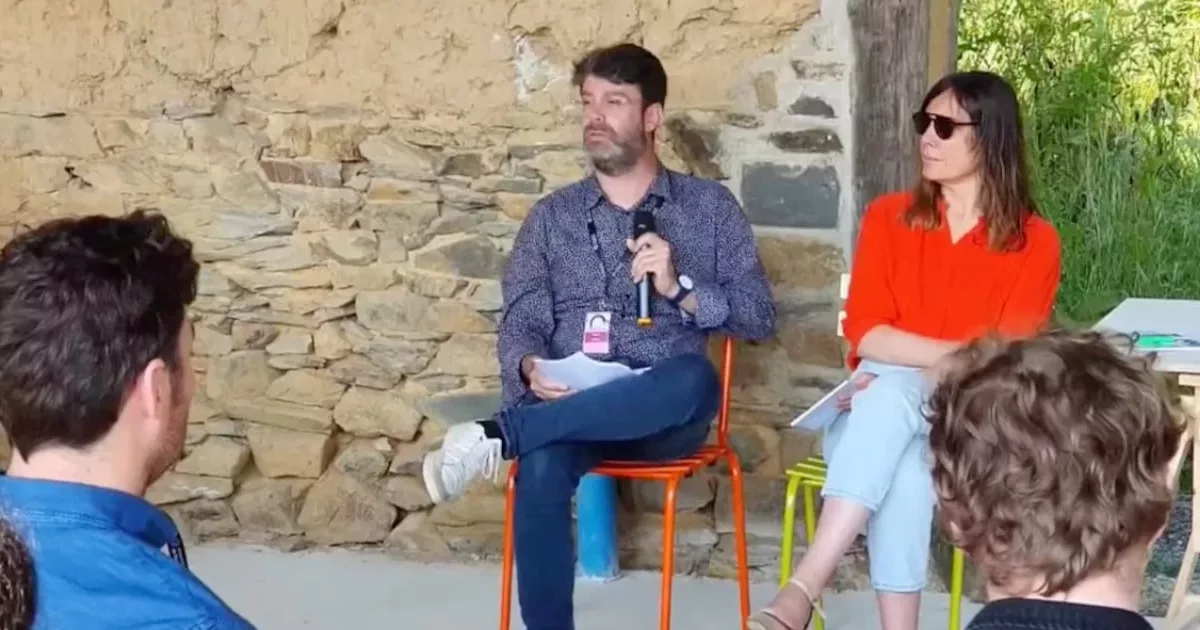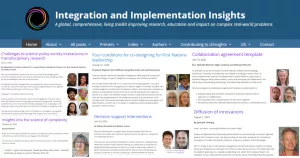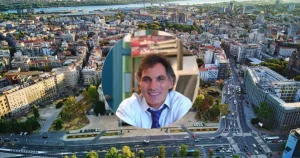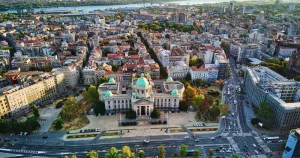Benoît Feildel: “Society at large must have a say in the choice of research topics”
Through its participatory research platform, the University of Rennes helps since 2022 to the development of research project co-constructed by academics, associations and decision makers

In 2022, the University of Rennes was awarded the “Sciences with and for Society” label by the French Ministry of Higher Education and Research. For which project?
Benoît Feildel: The TISSAGE project, whose acronym stands for “Triptyque Science Société pour AGir Ensemble” (Science Society Triptych for Acting Together). It has three main themes: “Meeting in training”, “Reinventing public debate” and “Co-constructing research”. I am in charge of the latter, which is developing a participatory research platform.
What is the motivation behind this platform?
B. F.: Today’s universities have become specialized and estranged from civil society. The choice of research topics is made either by the state, or by the academics themselves. We want to change that a bit. That is why all our actions in the TISSAGE project are based on the equally balanced triptych researcher-citizen-decision maker. Citizens are represented by organizations of the civil society: mainly associations, and small businesses. The decision makers are public decision makers, political and administrative leaders, as well as business leaders. In all three areas, we require all three types of stakeholders to be present. The aim of the participatory research platform is to implement this triptych in research projects.
How does it work?
B. F.: The participatory research platform is a seed fund and incubator. Each year, we launch a call for projects offering a grant of between €3,000 and €5,000. This sum is mainly intended to finance meetings where the three types of stakeholkders – researchers, citizens and decision-makers – get to know each other better, translate each other’s vocabulary, and start to build the research project. This stage is crucial, as we know of examples of “participatory research” in which academics are the prescribers of the research problem. And it is important to give economic recognition to the involvement of civil society: participating associations can be paid for this meeting time. In all, we have financed 32 projects over three years, out of the 35 proposals.
Why is the success rate so high?
B. F.: The selection committee, which is made up of the same triptych, does not judge scientific opportunity: it judges the desirability of a meeting. It tries to assess the willingness of the project’s co-initiators to really work together. Moreover, the applications did not exceed the total budget, which was around €50,000 per year.
What types of projects were selected under this scheme?
B. F.: To illustrate the diversity, in the last wave, decided in October 2024, there is a research project with the Rennes-based association Les Pétrolettes, which works on student prostitution, with academics from the École des Hautes Études en Santé Publique (Public Health Advanced Studies) and the metropolis of Rennes. There is a project to experiment with agroforestry as part of a social economy scheme. Another example: the reconstruction of a prehistoric pirogue in experimental archaeology, with locals in Vannes, in collaboration with an association working on urban policy. Or the mobilization of the associative sector in the neighborhood near Rennes 2 university to reflect on the issues of inequality and forms of discrimination, with sociologists, city policy players, the local community center and, of course, the public decision-makers behind these policies.
How easy is it for citizens to get involved through associations?
B. F.: Cécilia Querro, the platform’s coordinator, has worked hard to create links. She has used her knowledge of the associative world, and specific methodologies to enable the positions of the different players to be symmetrical, so that civil society, the associative sector, think that they are legitimate to put their questions to the university and to co-construct together. The call for projects is launched through higher education and research diffusion channels. C. Querro brings these opportunities to the attention of the associative sector, and accompanies the requests that come from there.
Once projects have been selected, how do you support them?
B. F.: During the incubation period, which lasts about a year, we offer three group meetings for the collectives behind the projects, so that they can share their experiences and help each other. There is also more individualized support, depending on the needs and requests of each collective. And, at the end of the year, we organize a symposium, with a reflective goal. In the first year, we focused on how researchers position themselves in participatory research, how it transforms their profession, but also their epistemology, their way of conceiving the construction of knowledge, and the legitimacy of different types of knowledge. In the second year, we worked on the notion of the citizen-researcher, by conducting a survey of “key witnesses”. Next year, we plan to turn our attention to decision makers. What’s more, as we come to the end of the three-year experiment, we hope to raise awareness of the need for further funding.
Have you already evaluated the impact of this scheme?
Some groups have held meetings, developed research projects, and applied for, and even obtained, funding from other sources. For example, since 2019, the Brittany Region has had a call for Research and Society projects, for maximum funding of €80,000. Other projects have obtained funding from the National Research Agency, 1% of whose budget is dedicated to science with and for society, and which launches dedicated calls for projects. Other groups have failed to meet. On a more general level, many of the associations that come to us say that participatory research gives them a form of legitimacy to make themselves known and to seek subsidies from public players. It’s a form of instrumentalization, but we accept it, as long as the work carried out is of a scientific nature. If this in-depth work reveals that associative action has a strong social utility and that it can be enriched by the co-construction of knowledge and the contribution of knowledge also built up in the academic world, so much the better.
How do companies participate in these initiatives?
B. F.: The TISSAGE program, and participatory research in general, are different from partnership research which is conducted with the socio-economic sphere with a view to adding value, through technology transfer, patents, etc. This approach is well known, and has long been at work in our universities, with companies setting up joint laboratories or funding PhDs. This does not prevent us from involving companies in TISSAGE. For example, in the axis “Reinventing public debate”, we have set up a Science Society Committee which brings together our triptych of stakeholders, to discuss priority issues for the region: Orange is represented, as is the Giboire group, a real estate group based in western France. Until now, no company has responded to the call for proposals for participatory research. But this may happen in the future. There is already enough public money devoted to building university-business linkages: TISSAGE is clearly part of a non-market perspective, and is aimed in particular at those populations furthest removed from the academic sector, marginalized or discriminated against.
Interview by Luc Allemand
SUBSCRIBE TO OUR NEWSLETTER
To stay up to date with our projects and the development of the EHC
Read more articles

Dealing with the complexity of society and environment
A global toolkit for tackling complex problems with more than 600 different methods Ever wish you had a free toolkit

The Moon & the Global South: Voices, Risks & Promise
Researchers warn that without inclusive governance, the Moon could become “a new arena for old patterns of exclusion” When rockets

Borko Furht: “AI shouldn’t be given much autonomy without maintaining accountability”
Beyond Superintelligence: The Real Challenges of Keeping Humans ‘In the Loop’ Borko Furht is a professor in the department of

The Belgrade Declaration on Science and Art for Sustainability
The Declaration was prepared as the principal outcome of the World Conference on Science and Art for Sustainability, held in